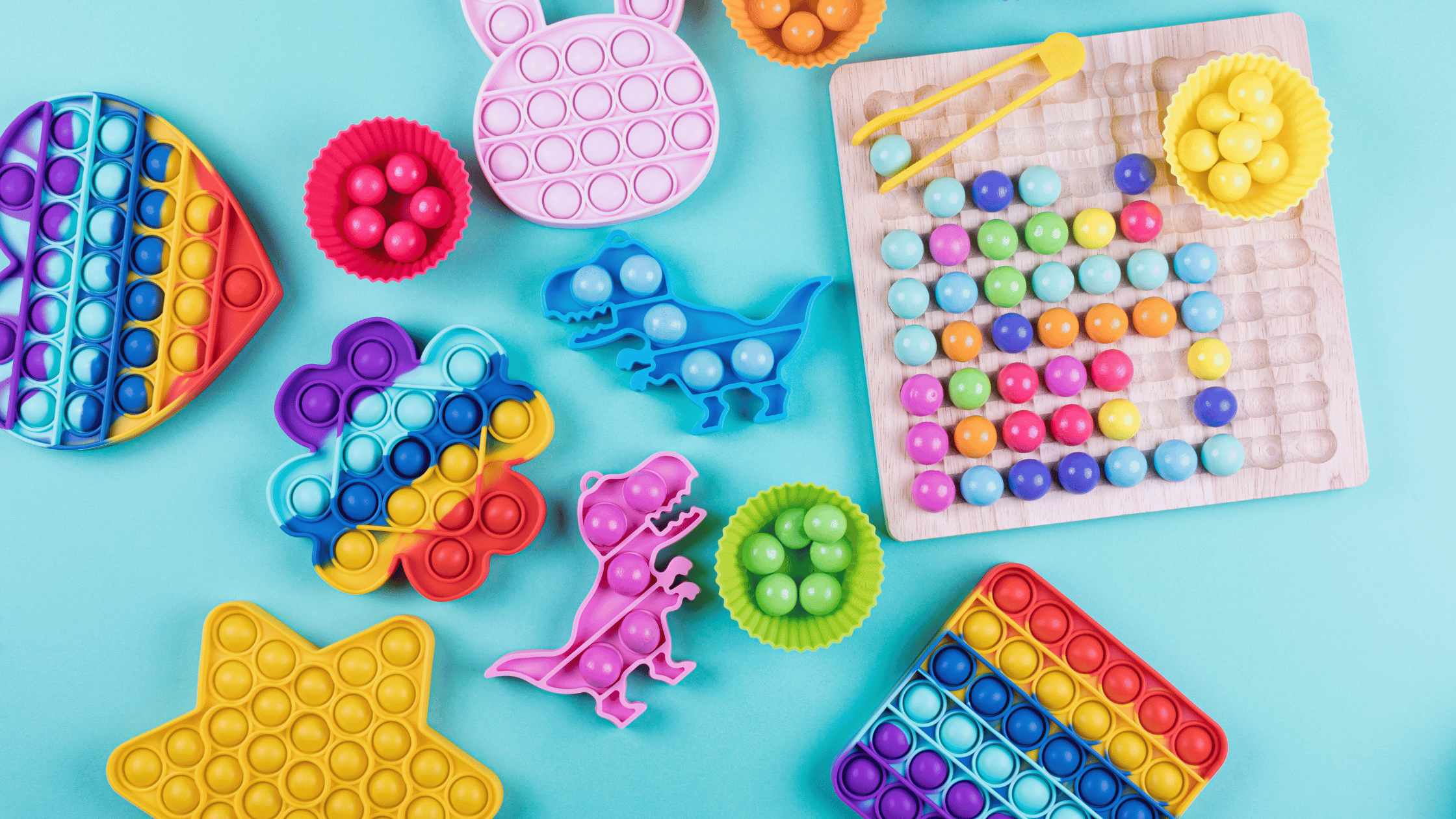Why Sensory Tools Alone Aren’t Enough
When you walk into any therapy clinic or classroom today, you’ll likely see bins full of sensory tools: fidget spinners, chewy necklaces, weighted lap pads, textured balls, and more. These tools are popular for a reason. They can provide comfort, help with self-regulation, and offer quick support in moments of overwhelm.
But sensory tools alone aren’t enough.
If your child is struggling with speech, attention, mealtimes, meltdowns, or anxiety and you’ve tried all the fidgets, chewies, and calming jars, it’s not your fault that progress feels slow. These tools are only addressing the surface of a much deeper issue.
To create lasting change, we have to go deeper to the root of the dysregulation. That’s where nervous system therapy and deep brain-based work like Neuroadaptive Therapy come in.
Let’s break down why sensory tools often fall short, and what it really takes to help your child thrive.
The Problem with Relying on Sensory Tools Alone
1. They’re a Band-Aid, Not a Solution
Most sensory tools offer short-term relief. They might help a child stay seated for 10 more minutes or calm down enough to return to class. But they don’t actually change how the nervous system responds to stress, transitions, or challenges.
If your child’s sensory needs are tied to a retained primitive reflex, chronic fight-or-flight mode, or unintegrated trauma patterns, no amount of fidgets or weighted blankets will rewire those responses.
2. They Can Create Dependency
When a child becomes reliant on a certain tool to function (say, they must have their chewy to attend class or their wiggle cushion to focus), we’re reinforcing a coping mechanism rather than helping them build internal regulation.
There’s nothing wrong with using supports. We all need them but the goal should always be to build a more flexible, resilient nervous system over time.
3. They Don’t Always Work
If you’ve ever given your child a sensory toy during a meltdown and it didn’t help, it’s likely because their nervous system was too overwhelmed to use calming strategies at that moment.
This is often misunderstood as behavior or defiance. In reality, their brain may be stuck in a defensive survival pattern that fidgets can’t fix.
Why Fidgets Don’t Work for Deeper Nervous System Dysregulation
When your child is dysregulated, whether they’re having frequent meltdowns, shutdowns, trouble focusing, or picky eating, what you’re seeing is often a nervous system response, not a behavior choice.
Their body is reacting to stress the way it was wired to do: by going into fight, flight, or freeze. (Harvard Health)
Sensory tools operate at the level of symptom management.
But many children need support at the root level, especially if they’ve experienced:
Developmental delays
Birth trauma or early medical procedures
High sensitivity or sensory processing challenges
ADHD, anxiety, or autism
Ongoing speech or feeding difficulties
A history of multiple therapies with limited progress
In these cases, deep brain-based therapy is often needed not just “more sensory.”
Wondering if your child might need more than sensory tools? Download our free Brain-Body Readiness Checklist to see if deeper nervous system support could help.
Nervous System Therapy vs Sensory Tools: What’s the Difference?
Sensory Tools:
Target the senses (touch, movement, sound)
Offer external stimulation or input to help a child regulate
Help in the moment, but rarely change the brain’s baseline
Work best when a child is already in a relatively calm state
Nervous System Therapy (like Neuroadaptive Therapy):
Targets the brainstem and midbrain, where survival responses are stored
Uses individualized protocols like light therapy and reflex work
Helps "teach" the brain that it’s finally safe to let go of defense patterns
Promotes real change in regulation, connection, and communication
Sensory tools help manage stress. Nervous system therapy helps rewire how the brain responds to it.
Beyond Sensory Toys: What Your Child Really Needs
If you’ve been stuck in the cycle of “try a new tool, see no real change, try again,” here’s what your child might actually need:
A calm brainstem that’s not stuck in survival mode
Integrated reflexes that allow for better focus and emotional control
Therapy that works with the nervous system, not against it
Individualized support that honors their unique brain-body needs
Sensory tools still have a place. We use them too! But they’re just one small piece of the puzzle.
What to Do If This Resonates
If you’re reading this and thinking, “This sounds like my child,” it’s a common experience. Many families feel stuck between therapy sessions, wondering why their child still seems dysregulated despite all the tools, charts, and routines.
It’s not your fault. You’re doing everything you can with what you’ve been given.
But there is another path.
Neuroadaptive Therapy is designed to go deeper to help your child’s brain feel safe, supported, and capable of real change. And when the nervous system shifts, everything else can follow: speech, focus, connection, and calm.
Ready to Go Beyond Sensory?
We’ve created a free Brain-Body Readiness Checklist to help you figure out if your child might benefit from deeper nervous system therapy.
It’s simple, eye-opening, and will help you see what’s really going on under the surface.
Final Thoughts
Fidgets aren’t bad. Weighted blankets can be great. Sensory tools can absolutely help in the right context.
But if they’re the only support your child is getting and progress is still slow, it might be time to go deeper.
Sensory challenges aren’t just about what your child can touch, chew, or bounce on. They’re about how safe their brain feels in their body and in the world.
Let’s support that, from the inside out.

